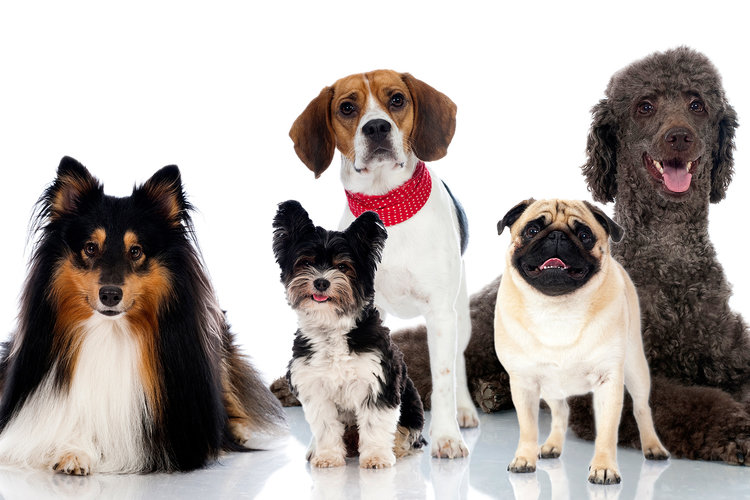The 3 Most Dangerous Dogs to Have Around Your Infant or Toddler
Relax, there is no need to start defending your dog’s breed. You can ease your mind and know that I do not pinpoint specific breeds in this article. Instead, I have a list of traits and context with dogs that are huge red flags for expecting parents and households with toddlers. Any breed of dog, whether mixed or purebred, a rescue or raised from a pup, abused or spoiled, trained or untrained, raised in a loving home or never been socialized, can fit into any of these categories. Ease your mind, sit back, and learn for the sake of your child, grandchild, and dog.
1. Dogs With High Predatory Aggression
Every dog has some prey drive, but dogs with predatory aggression are dangerous to have around toddlers and children, especially infants. Some characteristics of these dogs are:
-They often stare at a target creature, creep towards it, then quickly attack it by grabbing the “prey.”
-They are stimulated by high-pitched noises, squealing, baby cries, injured animals, or dog fights. Often dogs that have this type of aggression do not display aggression in other areas. It is extremely dangerous because it cannot be trained, medicated, or counter conditioned away. Owners are always shocked because it sometimes directed towards things that might not fit into the category of “prey.” The dog is acting on instinctual triggers that may be unexpected. Through much research for my video, Dogs to Diapers, I found numerous accounts documented of dogs grabbing and killing babies in bassinets, sleeping on beds, or even just lying on a blanket next to their moms. Any dog with a history of preying on animals is not safe around infants or toddlers.
2. An Adopted/Rescued/Foster Dog (Without A Known Background From A Reliable Source)
According to Karen Delise in Fatal Dog Attacks, “it roughly takes 2 weeks for a dog to adjust to a new living environment.” When adopting a dog from a shelter or rescue, sometimes we can never get the full story on the dog and previous situation. Whoever is surrendering the dog, by law, doesn’t have to disclose if the dog has a bite history. Let’s face it; when owners surrender dogs, rarely it is because they were perfect pets. That doesn’t mean they can’t be a fantastic part of your family with proper training and socialization. It usually means the original owner failed to give the dog what it needed to be successful. Still, it takes time to learn the dog’s mannerisms and for certain behaviors to surface. I hear all the time that people met the dog before they adopted it, and it was great with the other dogs and people at the shelter. That means nothing for when the dog gets settled into their new situation.
The same would go for rescue organizations. Unless this fostered dog was with the owners for a significant amount of time (over 4 months, in my opinion.) I would never trust a rescue dog with an unknown background to be around toddlers or infants. You need to KNOW that this dog was brought up in a home and coexisted without incident in a family that had small children. The term “kid-friendly” is a familiar slogan used in shelters. What type of evaluation was performed on the dog to determine they are “kid-friendly”? Was the dog merely patted by a child a few times or was he exposed to children loudly running and playing. Was he exposed to crying infant noises? When and how often was this evaluation done? How old were the children involved with the assessment compared to the ages of your children? These are some of the many questions that need definitive answers for the safety of your family. There is a significant difference between a dog accepting petting by a few random kids from a dog raised in a household. For a few hours, tolerating kids is one thing, but living with children 24 hours a day is two different scenarios. Full disclosure of the term “kid-friendly” is crucial before “exposing the dog with your infant/toddler.”
Please DO NOT interpret my advice for caution and research as an attempt to discourage you from rescuing or adopting a dog. That is NOT my intent. I am a HUGE supporter of rescuing dogs. Still, when you have small children at risk, it is not a responsibility to take lightly. Remember, this dog is going through a huge life change, and they will need the proper time to adjust and fit into the family dynamic. Statistics support a high number of dog bites that occur after a family rescues a “kid-friendly” dog. Expecting them to just fit right in is naïve, irresponsible, and not fair to the dog.
If you choose to go this route, set up a management plan for your family to properly integrate your new dog into your household. Take it slow and educate yourself on dog body language to help you know if your new pet is adjusting in a nonstressful way. If you have doubts after bringing home your new pet or something doesn’t feel right, please, trust your instincts. Do not feel like a failure; you are doing what is best for your children and for that dog. Do not let other people’s opinions jeopardize the safety of your kids. I have witnessed dogs placed in homes with young children that should have never been. Then when the owners try to bring the dog back to the rescues, they are guilted that the dog will be euthanized, or they have no room to take the dog back. Then the owner is put into a situation where they have to drop the dog off at a shelter or try to rehome. The cycle starts over and over again with the same dog. A broken process like above breaks my heart for these dogs and families.
3. A Senior Dog Or A Dog That Has Health Issues
When I introduced my first daughter to my dog, Ajax, he was 10 years old. I couldn’t wait for my daughter to be raised around dogs just as I was when I was a child. Ajax was a massive part of my life; I did everything with him from competitions to vacations. He was even at my wedding and joined us for the honeymoon! I was so excited to introduce them that I documented their first meeting in my film Dogs to Diapers. But it was not the relationship I designed for them in my head. Over the first few weeks, Ajax was very aloof around her. He would show curiosity, but other than that, he wanted his routine and space. If I forced a relationship with the two of them, it wouldn’t have been organic. He had no interest around the baby, and the great relationship that I had with him did not automatically transfer to my daughter.
When my daughter started crawling and grabbing, Ajax began to display a lot of avoidance behaviors. I knew I had to intervene to prevent a situation that could leave Ajax to warn the baby of his boundaries. I knew he was older now, and his tolerance had lowered for stress. Every dog has a bite threshold (just like people who can tolerate a certain amount of stressors). It’s essential to know your dog and understand that their limits can change as they age, just like us. You cannot expect a senior dog to tolerate being poked at, stepped on, and crawled over continually. Even if they might have experienced that at a younger age and never had any issues). You also can not expect a toddler to respect the dog without constant supervision guiding the interaction.
I am not advocating that you rehome your senior dog! What ended up working for my family was the use of baby gates when the baby was active. Ajax still felt included, but he spent most of his time napping in peace rather than continually trying to avoid the baby invading his space. Then when the baby napped or went down at night, Ajax could have freedom of the house. Of course, I was disappointed, but then I realized how he was much more relaxed and had fewer things to be stressed about when I did not force it. I got so much more quality time with Ajax by doing activities that he enjoyed with the baby; for example, stroller walks. Ajax loved going for walks with the baby and me. By doing the things he enjoyed, Ajax started to associate her with positive experiences. Once he saw me getting his leash ready, Ajax would wait by the door while I prepared the baby for our walk.
The same methods apply for a dog that has health issues. They are already uncomfortable, and the pain could cause their tolerance level and bite threshold to lower. Something as simple as an ear infection could have the dog respond with a nip if being pet by a child in that area. Be cautious and give the dog the appropriate space to avoid any situations until you resolve the health issue. You will have to create a management plan if it is a more permanent health issue like bad hips or chronic allergies.
I genuinely believe that all kids should be raised with dogs because my adventures with dogs are some of the best memories I have. It is our job for those memories to be positive, not for our kids to grow up fearing dogs because the family pet bit them. It’s also not fair for a dog to be terrorized by your kids as they age. Having a healthy relationship between dogs and babies is the most amazing gift you can give your dog and kids.
Follow Dogs to Diapers on our YouTube page.
Delise, K. (2002). Fatal dog attacks: the stories behind the statistics. Manorville, NY: Anubis Press.



